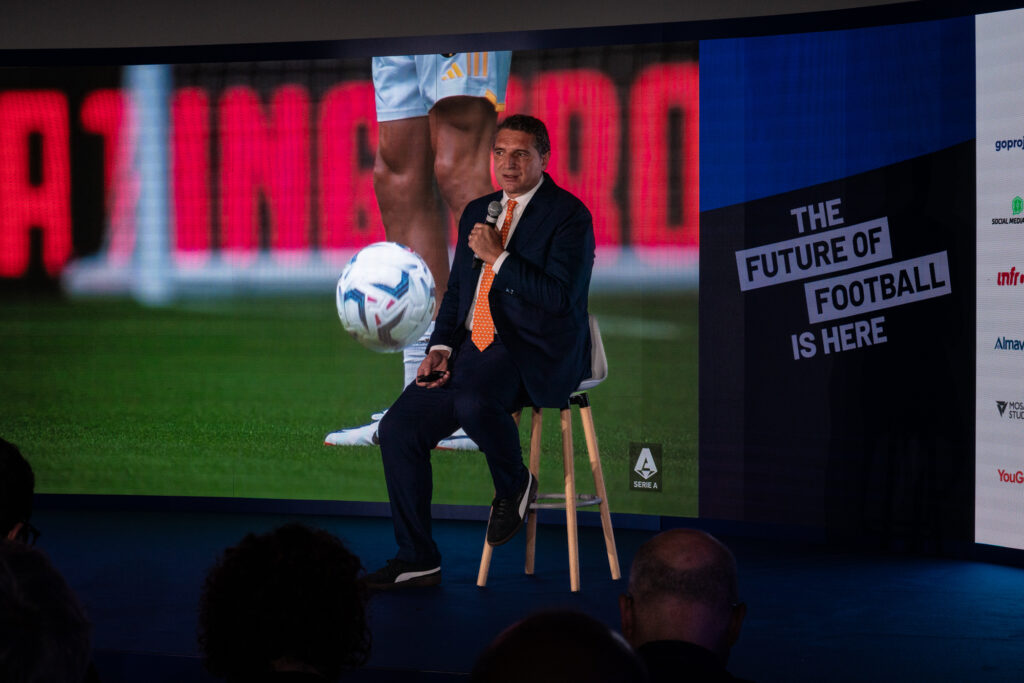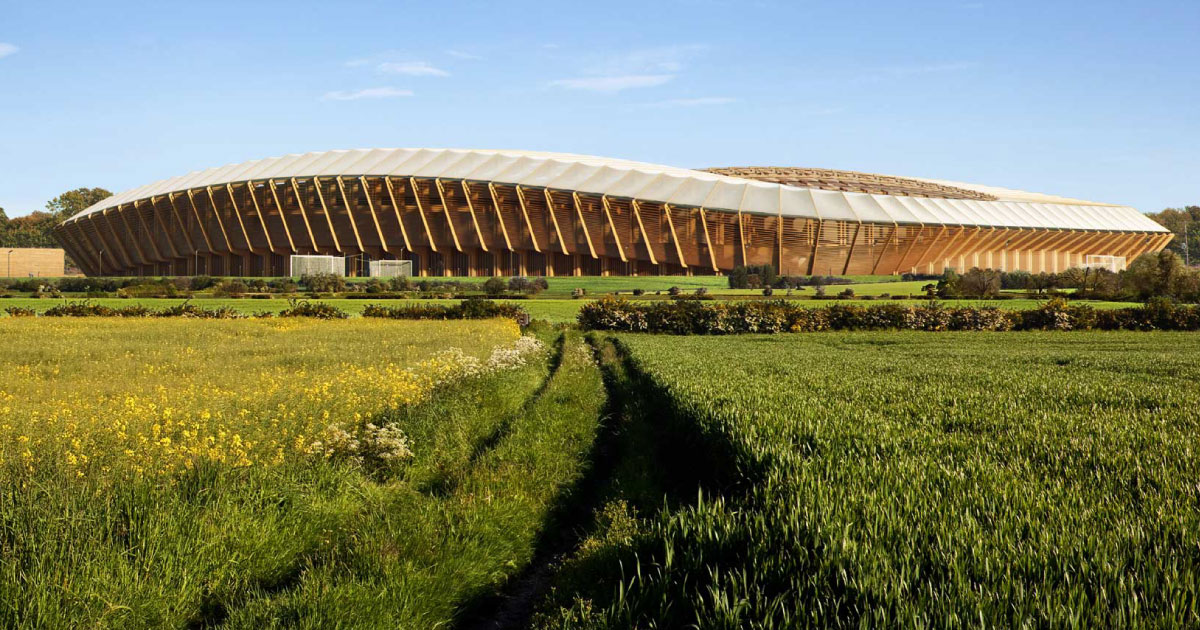In recent years, the business-to-business (B2B) events sector has decisively shifted towards the world of sports, with a special emphasis on football. This sport, with its large following and deep emotional connection, represents a unique opportunity for networking and corporate marketing. It is no coincidence that the number of B2B events linked to football is on the rise, as companies realize the enormous potential for building relationships, increasing visibility, and generating value.

Football as a Networking Platform
Football has the unique ability to bring people from different backgrounds together through a shared passion. When it comes to B2B events, such as SFS, a one-of-a-kind event on an international scale in Italy, companies can leverage this powerful emotional appeal to connect in a less formal but highly stimulating atmosphere, fostering more authentic and collaborative business relationships.
- Networking Statistics: A study conducted by SportBusiness in 2023 showed that about 68% of senior managers consider sports events, particularly football events, an ideal environment for developing new business partnerships. B2B football tournaments and corporate meetings in football settings also record a participation rate 25% higher than other types of B2B events.
- Corporate Interaction and Opportunity Generation: The structure of football events facilitates corporate interaction. For example, companies can invite partners and potential clients to a game or an exclusive stadium event, where the shared experience of football eases dialogue and helps build trust. According to a Deloitte report, 70% of companies at these events reported a 20% increase in interactions with potential partners or clients and a 15% boost in closing new partnerships.
Case Study – “Business Match Day”: Events like the “Business Match Day” organized in high-profile stadiums, such as Allianz Stadium in Turin, have proven to be exceptional for facilitating networking among large and medium-sized companies. During a similar event held in February 2024, 75% of participating companies stated they had generated at least one valuable business opportunity within the following six months. Major brands like BMW and Samsung highlighted that the football setting fostered a smoother relational approach compared to traditional meetings in offices or trade show environments.
Why Football Networking Works
Long-Term Benefits: The duration and intensity of matches or dedicated gatherings allow for connections to solidify beyond the event, increasing the likelihood that these relationships will evolve into strategic partnerships.
Informal and Engaging Environment: The football setting lowers communication barriers. Unlike formal meetings, a sports event allows people to get to know each other in a more authentic and relaxed way, allowing conversations to unfold without excessive pressure or expectations.

Branding and Audience Engagement
One of the most relevant aspects of football-related B2B events is the branding potential and public exposure, which proves extremely advantageous for companies. Football, as the most-watched sport worldwide, allows companies to connect not only with other event participants but also with a huge and passionate fan base, eagerly following events and associated brands.
- Massive Exposure and Brand Positioning: According to a 2023 Nielsen report, a brand associated with a football event gains 35% more visibility compared to other types of events. This applies not only on the days of the event but also extends to the days before and after, thanks to media coverage and social media buzz. The impact of a presence in a football context often results in increased customer loyalty and positive brand perception.
- ROI on Social Media: B2B football events also have a significant impact on social media, amplifying the value of branding investment. During the 2023 Champions League Business Forum, for instance, visibility for participating brands increased by 20% on major social channels within the first 24 hours of the event. Additionally, audience engagement through posts, stories, and video content generated an engagement rate 30% higher than the average for other corporate events.
Case Study – Alfa Romeo and Milan: A concrete example of success is the collaboration between Alfa Romeo and Milan. During the “Football Business Day” held in Milan, Alfa Romeo showcased its new models in San Siro Stadium spaces, creating an interactive experience for guests. In the following days, the brand recorded a 25% increase in social mentions and a 10% increase in visits to its website, demonstrating the strong potential for brand awareness and the effectiveness of positioning in a football context.to del 10% nelle visite sul sito web aziendale, dimostrando il forte potenziale di brand awareness e l’efficacia del posizionamento in un contesto calcistico.

Football’s Power to Drive Branding and Engagement Strategies
- Emotions and Deep Connections: Football is a sport that elicits intense emotions, and companies leverage this engagement potential to create positive associations in consumers’ subconscious. Brands like Nike and Adidas, for example, invest millions of dollars in football sponsorships because they know these emotional connections have a lasting impact on consumers.
- Personalized Events and Exclusive Experiences: B2B football events also offer the opportunity to create exclusive experiences for the public, such as access to reserved areas, meet-and-greets with players, and product presentations directly from the stands. This exclusivity increases appeal for participants and enhances the perceived value of the brand.
B2B events linked to football, like SFS, are successful due to a combination of factors: from their unique ability to foster networking in an emotionally engaging environment to their potential for enhancing brand awareness and the new opportunities offered by technological innovation and a commitment to sustainability. The expansion of the B2B market in the world of football is set to grow, bringing new opportunities for companies that can fully exploit this potential. In summary, football is not just a game but a dynamic and influential platform, capable of bringing together companies from around the world, stimulating commercial growth, and promoting values increasingly relevant to today’s society.
Football and Business: The New Frontier for Corporate Networking and Branding
In recent years, the business-to-business (B2B) events sector has decisively shifted towards the world of sports, with a special emphasis on football. This sport, with its large following and deep emotional connection, represents a unique opportunity for networking and corporate marketing. It is no coincidence that the number of B2B events linked to football is on the rise, as companies realize the enormous potential for building relationships, increasing visibility, and generating value. Football as a Networking Platform Football has the unique ability
From the “Golden Goal” to the “Green Goal” – The Sustainable Future of Football
Football, the sport that captures the hearts of billions worldwide, has a long history of evolution both in its rules and its cultural impact. From 1993 to 2004, fans had to hold their breath in anticipation of the Golden Goal – a rule used to decide knockout matches that went into extra time. According to this rule, the first team to score during extra time would immediately win the match. The Golden Goal is especially remembered by the teams that
FOOTBALL DIGITAL REVOLUTION
by Ivan Ortenzi Docente MBA and di Sport Industry Football is facing a crucial challenge: embracing digital transformation to ensure the sustainability and growth of its business. Today, in the digital age, fan attention and their online engagement represent fundamental resources, and the ability to engage them effectively has become a critical success factor. However, the football sector must evolve rapidly to respond to the pressures of an increasingly competitive market between the rigidity of traditional costs and the urgency to





